|
Related FAQs: Nephtheids, Nephtheids 2, Dendronephthya, Neptheid Identification, Nephtheid Behavior, Nephtheid Compatibility, Nephtheid Selection, Nephtheid Systems, Nephtheid Feeding, Nephtheid Disease, Nephtheid Reproduction/Propagation,
Soft Coral Propagation,
Soft Coral Health,
Related Articles: Dendronephthya and
Scleronephthya, Corals to Avoid, by Adam Blundell, Soft Corals, Order Alcyonacea,
/The Best Livestock For Your Reef Aquarium:
Soft Corals of the Family
Nephtheidae,
Part 3
To: Part 1,
Part 2, Part 4,
|
|
|
By Bob Fenner |
|
Genus Litophyton Forsskal 1775: Tree Soft Corals. Bush to
tree-like in overall appearance. Up to half a meter in height. One type
of polyp structure that are non-retractile, clustered terminally on
branches
| Litophyton arboreum Red Sea. Thick, upright tree-like
stalk with branching limps. To 50-60 cm. tall. Variable in color depending
where growing, season. Red Sea. |
%20MD.jpg)
|
Bigger PIX:
The images in this table are linked to large (desktop size) copies.
Click on "framed" images to go to the larger size. |
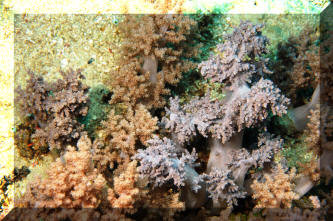
%20MD.JPG)
%20MD.JPG) |
Genus Nephthea Audouin 1826: Bush- or tree-like in
appearance. To a foot and a half tall. Soft to touch. One type of
polyps that are non-retractile, clustered terminally on branches,
lobe-like. Most often are colored brownish-yellow, but also found
brownish-green to purple. Color owing to their Zooxanthellae. Common to
abundant in wave-protected shallow reef areas in Indo-western Pacific
reefs.
| Nephthea sp. in captivity and in
Australia's Great Barrier Reef. |
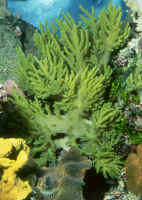 
|
Bigger PIX:
The images in this table are linked
to large (desktop size) copies. Click on "framed" images
to go to the larger size. |
|
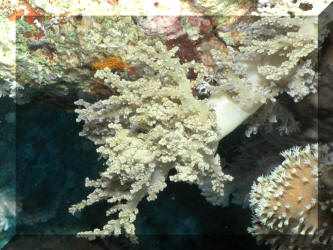
|
Genus Paralemnalia Kukenthal 1913: Shorter, more numerous
branching (finger-like lobes arise from common bases) than Litophyton,
Lemnalia spp. Polyps can or cannot withdraw completely, colonies are
limited in their contraction.
Bigger PIX:
The images in this table are linked
to large (desktop size) copies. Click on "framed" images
to go to the larger size. |
|

|
| Paralemnalia thyrsoides (Ehrenberg 1834).
May be common where found. Shallow fringing reefs, slopes, flats.
To 30 m depths. Western Pacific; Australia to Japan. N. Sulawesi
pix. |
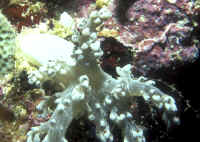 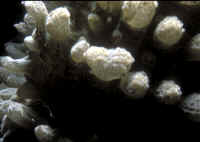
|
Bigger PIX:
The images in this table are linked to large (desktop size) copies.
Click on "framed" images to go to the larger size. |
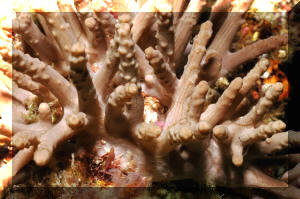
 |
To: Part 1,
Part 2, Part 4,

